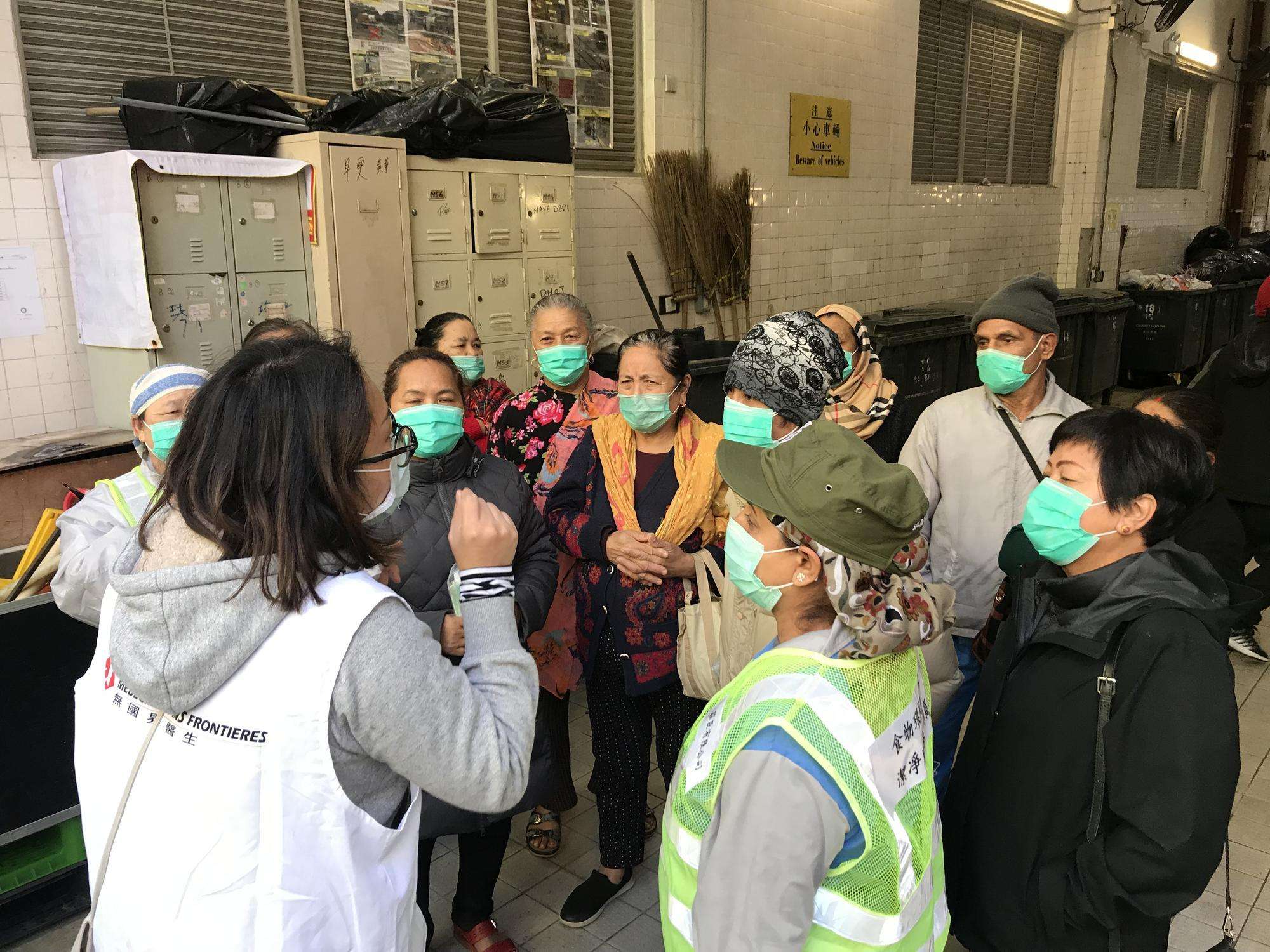Karin Huster is a nurse and field coordinator for Doctors Without Borders/Médecins Sans Frontières (MSF) in Hong Kong, where teams are working to provide essential public health information and calm fears related to the new coronavirus outbreak. MSF has also sent personal protective equipment to the Hong Kong St. John Ambulance service and to Wuhan Jinyintan hospital at the epicenter of the outbreak in China's Hubei province. This op-ed was originally published by The Seattle Times.
It’s been hard to be far away from home, watching a pandemic of panic of the new coronavirus ripple across the world.
A month ago I left Seattle for Hong Kong — a city of 7.3 million bordering mainland China and one of the planet’s most densely populated — as part of a Doctors Without Borders effort to rein in the widespread fear gripping the city as it began to wrestle with a virus the world knew little about.
That fear has now reached home.
As of March 3, there were some 93,000 cases worldwide, 116 in the United States — and now cases and nine deaths in Seattle, my hometown, where King County officials declared a state of emergency.
It has been reassuring to me that there are things we as individuals can do, and Hong Kong has shown me that we can live in an era of coronavirus.
Since being there, I have watched people go through a roller coaster of emotions as the COVID-19 outbreak unfolded. For many, it was a brutal flashback to the nightmare of the 2003 SARS outbreak, where hundreds died in the city.
That memory triggered widespread panic and frantic buying of masks. As global supplies stretched thin, it was common to see disciplined lines of hundreds — at times thousands — of people who’d heard a store might have received a new batch. Social distancing measures were enacted, such as the temporary closing of nonessential public buildings, museums, schools and universities. Many were asked to work from home, while most borders with mainland China were closed.
But the SARS memory also triggered other more stigmatizing reactions: Close contacts of cases placed on home quarantine were monitored with electronic bracelets akin to those used in the U.S. for people under house arrest. During our work with vulnerable communities, we were told by several foreign domestic workers that they couldn’t go out to see their friends anymore for fear they would bring the disease into their employer’s homes.
Overall, however, Hong Kongers have learned much from the SARS outbreak, and it shows.
No matter their inner fears, there is a palpable sense of individual responsibility for the greater common good here, to respect the safety and health of others. The people of Hong Kong have embraced sound infection-control measures at home and in public. Posters on how to protect yourself and others are everywhere. Armies of janitors constantly clean streets, metros, buses, and elevators. Waiters dispense hand-sanitizing gel when you enter a restaurant.
While proven epidemiological methods of surveillance, contact tracing and isolation of the sick do work, combining those with mitigation measures such as reducing the amount of contacts one has or staying home when sick becomes urgent in the face of rapid and most likely extensive spread of the outbreak.
COVID-19 is a new disease and, as such, it is normal that people worry. From previous experience responding to outbreaks, I know that one of the key pillars of any response is engaging with communities everywhere — to educate, listen, understand and address their fears and concerns. Unfortunately, rumors, fake news, and conspiracy theories can play a prominent role in spreading misinformation about this new disease, stoking unnecessary and harmful bouts of panic.
To counter this, clear, timely, measured and honest communication and guidance from our public health officials will be paramount.
So, what can we as individuals do?
For the vast majority of us, the symptoms we will experience will be very mild. So while it might be tempting to run to a clinic or a hospital at the first signs of a cold and demand to be tested, we run the very real risk of unnecessarily overwhelming our health facilities (and in the process, exposing others to what we might have).
As a community, we must work together to ensure that care and hospital beds always remain available for those who need them. We must join efforts to ensure the rational use of precious personal protective equipment such as masks so they remain available to those who truly need them — our health-care workers and the sick.
When it comes to how best to protect ourselves — and at the same time how best to protect others — getting back to the basics works: stay home when you are sick (even a small cold); frequently wash your hands; employ good cough and sneeze etiquette; and wear a mask when you have respiratory symptoms. And with COVID-19 seemingly spreading via some who don’t feel sick, reasonable social distancing can be a sensible measure too.




